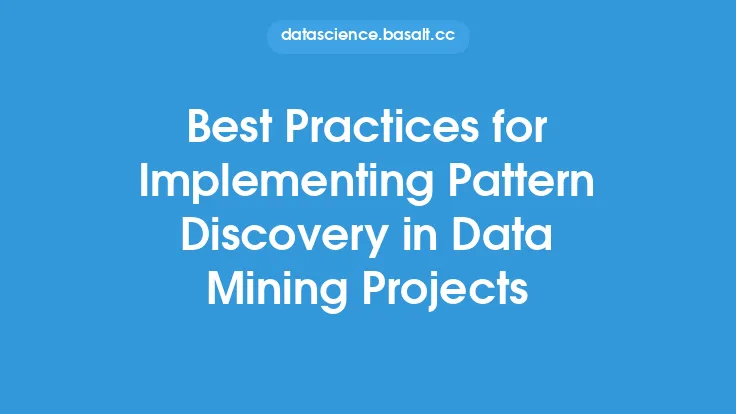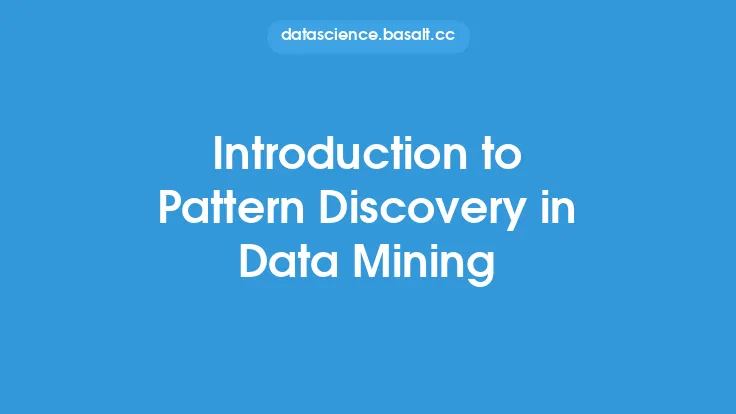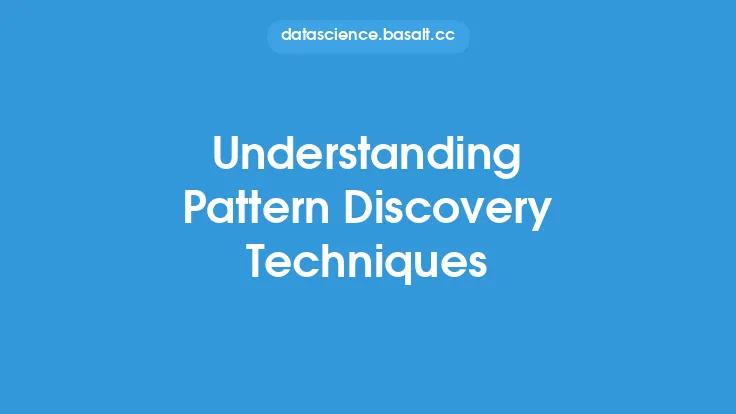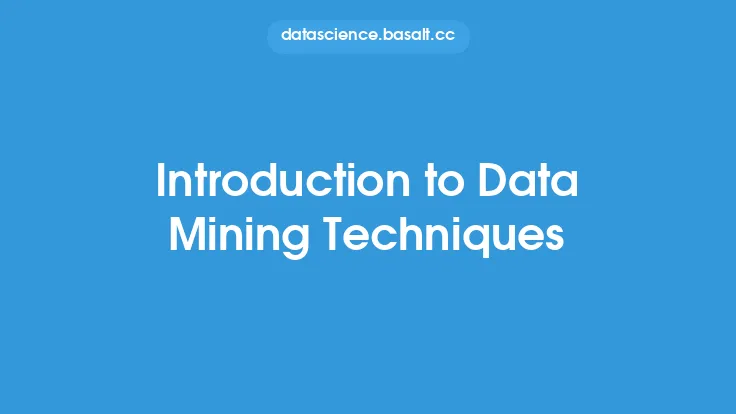Data mining is the process of automatically discovering patterns and relationships in large datasets, and it has become a crucial aspect of data analysis. With the exponential growth of data in various fields, data mining techniques have evolved to help organizations and individuals extract valuable insights from their data. In this article, we will delve into the world of data mining techniques for pattern discovery, exploring the various methods and algorithms used to uncover hidden patterns and relationships in data.
Introduction to Data Mining
Data mining is a multidisciplinary field that combines concepts from computer science, statistics, and mathematics to extract knowledge from data. It involves using various techniques, such as machine learning, statistical analysis, and data visualization, to identify patterns, trends, and correlations within datasets. Data mining has numerous applications in fields like marketing, finance, healthcare, and social media, where it is used to inform business decisions, predict customer behavior, and identify potential risks.
Types of Data Mining Techniques
There are several types of data mining techniques, each designed to address specific problems or goals. Some of the most common techniques include:
- Classification: This technique involves assigning a label or category to each data point based on its characteristics. For example, a classification model might be used to predict whether a customer is likely to churn or not.
- Clustering: Clustering involves grouping similar data points together based on their features. This technique is often used in customer segmentation, where customers are grouped based on their demographics, behavior, or preferences.
- Regression: Regression analysis is used to predict continuous outcomes, such as predicting the price of a house based on its features.
- Association rule mining: This technique is used to identify relationships between different variables in a dataset. For example, a retailer might use association rule mining to identify products that are frequently purchased together.
Pattern Discovery Techniques
Pattern discovery is a critical aspect of data mining, and it involves using various techniques to identify hidden patterns and relationships in data. Some of the most common pattern discovery techniques include:
- Decision trees: Decision trees are a type of supervised learning algorithm that uses a tree-like model to classify data or predict outcomes. They are often used in classification and regression problems.
- Neural networks: Neural networks are a type of machine learning algorithm that uses a network of interconnected nodes to learn patterns in data. They are often used in image and speech recognition, as well as in predictive modeling.
- K-means clustering: K-means clustering is a type of unsupervised learning algorithm that groups similar data points together based on their features.
- Apriori algorithm: The Apriori algorithm is a type of association rule mining technique that is used to identify relationships between different variables in a dataset.
Data Preprocessing
Data preprocessing is a critical step in data mining, as it involves preparing the data for analysis. This includes handling missing values, removing duplicates, and transforming the data into a suitable format. Some common data preprocessing techniques include:
- Data normalization: Data normalization involves scaling the data to a common range, usually between 0 and 1, to prevent features with large ranges from dominating the model.
- Data transformation: Data transformation involves converting the data into a suitable format for analysis. For example, categorical variables might be converted into numerical variables using one-hot encoding.
- Handling missing values: Handling missing values involves deciding what to do with missing data points. This might involve imputing the missing values, removing the missing data points, or using a model that can handle missing values.
Evaluation Metrics
Evaluating the performance of a data mining model is crucial to ensure that it is accurate and reliable. Some common evaluation metrics include:
- Accuracy: Accuracy measures the proportion of correctly classified instances.
- Precision: Precision measures the proportion of true positives among all positive predictions.
- Recall: Recall measures the proportion of true positives among all actual positive instances.
- F1 score: The F1 score is the harmonic mean of precision and recall.
Real-World Applications
Data mining has numerous real-world applications, including:
- Customer segmentation: Data mining can be used to segment customers based on their demographics, behavior, or preferences.
- Predictive maintenance: Data mining can be used to predict when equipment is likely to fail, allowing for proactive maintenance.
- Fraud detection: Data mining can be used to identify patterns of fraudulent behavior, such as credit card fraud or insurance fraud.
- Recommendation systems: Data mining can be used to build recommendation systems that suggest products or services based on a customer's past behavior or preferences.
Challenges and Limitations
While data mining has numerous benefits, it also has several challenges and limitations. Some of the most common challenges include:
- Data quality: Poor data quality can significantly impact the accuracy of a data mining model.
- Overfitting: Overfitting occurs when a model is too complex and fits the noise in the data rather than the underlying patterns.
- Underfitting: Underfitting occurs when a model is too simple and fails to capture the underlying patterns in the data.
- Interpretability: Data mining models can be difficult to interpret, making it challenging to understand why a particular prediction was made.
Future Directions
The field of data mining is constantly evolving, with new techniques and algorithms being developed to address emerging challenges. Some of the future directions in data mining include:
- Deep learning: Deep learning involves using neural networks with multiple layers to learn complex patterns in data.
- Transfer learning: Transfer learning involves using pre-trained models as a starting point for a new model, allowing for faster training and improved performance.
- Explainable AI: Explainable AI involves developing models that are transparent and interpretable, allowing for a better understanding of why a particular prediction was made.
- Edge AI: Edge AI involves deploying AI models on edge devices, such as smartphones or smart home devices, to reduce latency and improve performance.





